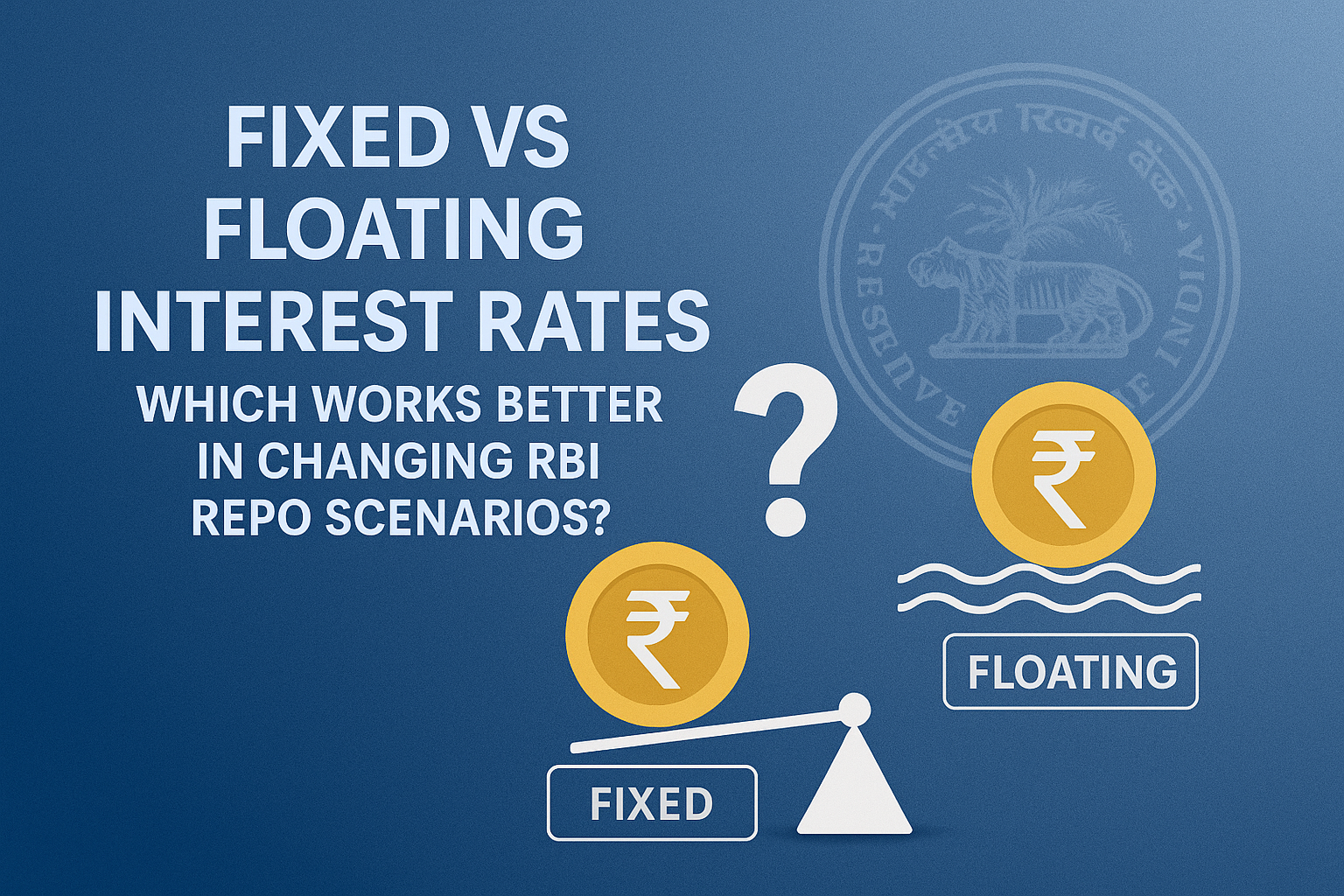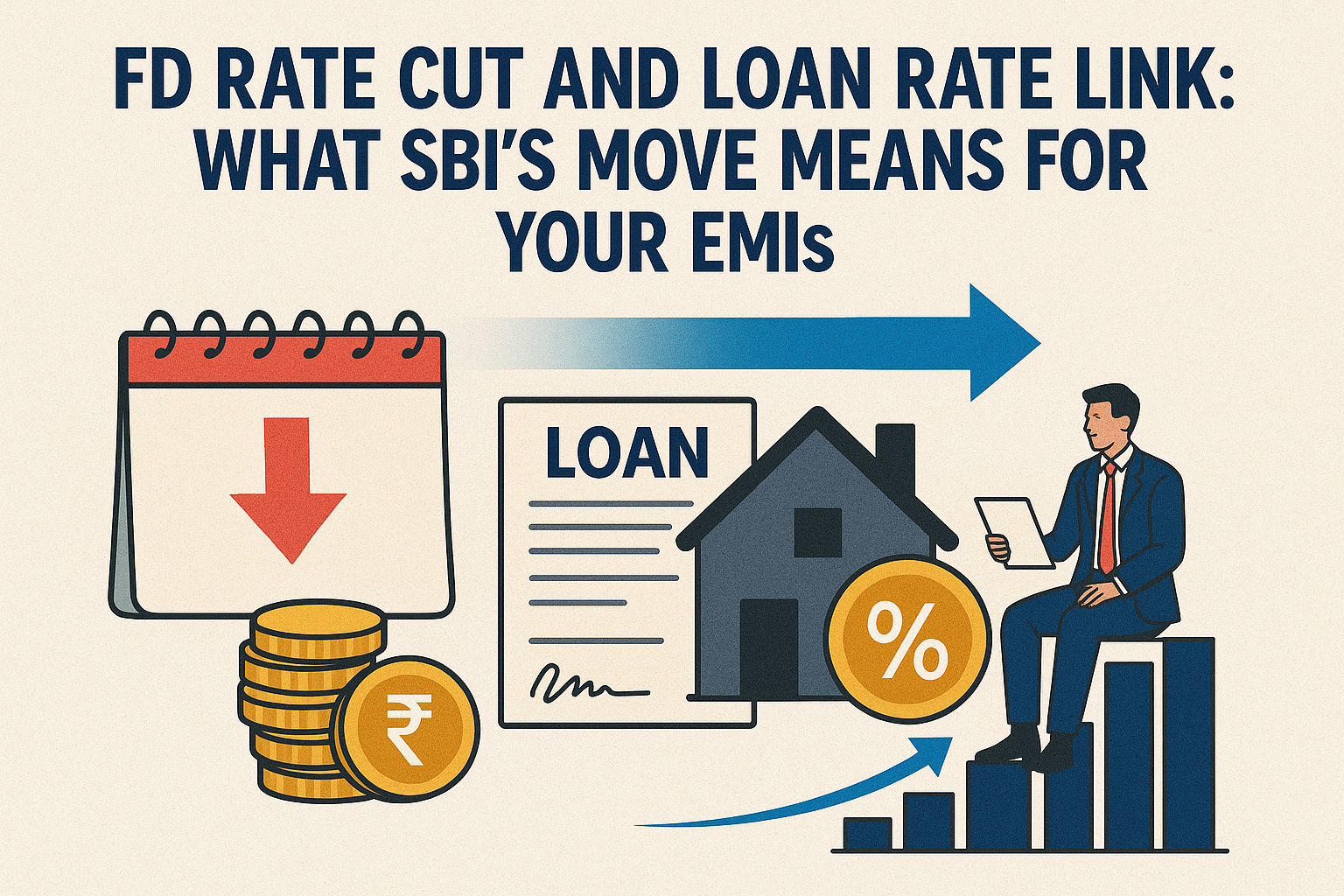Fixed vs Floating Interest Rates: Which Works Better in Changing RBI Repo Scenarios?

When applying for a home loan, one of the most important decisions you’ll face is whether to choose a fixed interest rate or a floating interest rate. This decision becomes even more critical in the context of the ever-changing RBI repo rate, which directly influences borrowing costs across India.
In this article, we’ll break down the difference between fixed and floating rates, explore how repo rate movements affect them, and help you decide which option may be better for your financial goals.
What is the RBI Repo Rate and Why Does It Matter?
The RBI repo rate is the rate at which the Reserve Bank of India lends short-term funds to commercial banks. Changes in this rate directly affect how much banks charge on home loans and other forms of credit.
- When the RBI reduces the repo rate, banks generally lower their lending rates, making borrowing cheaper.
- When the RBI increases the repo rate, borrowing costs rise, pushing up home loan EMIs.
This leads us to the Impact of RBI Repo Rate Changes on Your Home Loan EMIs, which is why choosing between fixed and floating rates becomes a strategic decision.
Fixed Interest Rate: Stability Over Uncertainty
A fixed interest rate means your home loan rate remains constant throughout the loan tenure or for a fixed period.
Pros of Fixed Interest Rate:
- Predictable EMIs that remain unchanged even if RBI hikes repo rates.
- Easier long-term financial planning due to EMI stability.
- Peace of mind during high inflation or volatile economic conditions.
Cons of Fixed Interest Rate:
- Generally higher than prevailing floating rates at the time of loan sanction.
- You may miss out on lower rates if RBI cuts the repo rate significantly.
- Limited flexibility to benefit from market corrections.
Best For:
Borrowers who prefer stability and expect repo rates to rise significantly in the near future.
Floating Interest Rate: Flexibility to Match Market Changes
A floating interest rate (also known as adjustable rate) fluctuates based on changes in the external benchmark — in many cases, the RBI repo rate.
Pros of Floating Interest Rate:
- Lower initial rates compared to fixed rates.
- When repo rates decrease, your home loan EMIs reduce automatically.
- Opportunity to save substantial interest over time if repo rates stay low.
Cons of Floating Interest Rate:
- EMIs can rise if RBI increases the repo rate.
- Uncertainty makes long-term budgeting slightly harder.
- Requires active monitoring of market conditions.
Best For:
Borrowers who expect repo rates to remain stable or decline, and those comfortable managing short-term fluctuations.
How RBI Repo Rate Fluctuations Influence Your Choice
| RBI Repo Rate Trend | Fixed Interest Rate | Floating Interest Rate |
| When repo rate rises | Better protection | EMIs increase |
| When repo rate falls | No benefit | EMIs decrease |
| Volatile repo scenario | Predictable EMIs | Uncertain EMIs |
Use EMI Calculators to Compare Your Options
Regardless of your choice, always use an EMI calculator to simulate different scenarios:
- Compare EMIs for both fixed and floating rates.
- See how future repo rate hikes or cuts might affect your monthly payments.
- Evaluate total interest outflow across the entire tenure.
For instance, if you borrow ₹50 lakh at 8% fixed for 20 years, your EMI remains ₹41,822. However, if you opt for 7.5% floating and RBI cuts repo rate by 0.5%, your EMI drops to ₹40,280 — saving you over ₹3.5 lakh across the tenure.
👉 You can use our Home Loan EMI Calculator to easily test these scenarios.
Recent RBI Repo Rate Trend and Current Market Behavior
As of 2025, the RBI has followed a tightening monetary policy due to inflation concerns. The repo rate increased from 4% during 2020 to 6.5% by mid-2024. This tightening phase has led many borrowers to consider fixed rates for protection. However, some market analysts expect stabilization or possible softening of rates in the coming quarters, making floating rates attractive once again.
Conclusion
There is no one-size-fits-all answer to whether fixed or floating interest rates work better during changing RBI repo rate scenarios. Your choice should depend on:
- Your risk appetite.
- The current economic outlook.
- How long you plan to stay with the loan.
- Your ability to handle short-term EMI fluctuations.
By understanding the Impact of RBI Repo Rate Changes on Your Home Loan EMIs, you can make an informed decision that aligns with your long-term financial goals. Always analyze multiple lender offers, use EMI calculators for simulation, and consider refinancing if market conditions shift significantly during your loan tenure.
Note: IndiBlogHub features both user-submitted and editorial content. We do not verify third-party contributions. Read our Disclaimer and Privacy Policyfor details.







